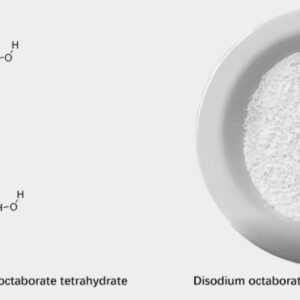Weather affects commercial concrete curing in the UK. Rain, frost, and heat can alter its strength and durability. Understanding these impacts ensures successful projects. Let’s explore how weather influences curing and how to manage it.
How Rain Affects Curing
Rain adds excess water to fresh concrete. This dilutes the mix, weakening its strength. A pour in Liverpool during rain can lead to cracking. Contractors cover concrete with plastic sheeting to protect it. In the UK, where rain is frequent, this step is critical.
Cold Weather and Frost Risks
Cold slows curing. Below 5°C, concrete struggles to set. Frost can freeze water in the mix, causing cracks. A project in Edinburgh faced delays due to winter frost. Contractors use insulated blankets or heaters to maintain temperature. Admixtures like accelerators speed up curing in cold UK weather.
Hot Weather Challenges
Heat speeds up curing too much. In summer, a pour in London may set too fast, trapping air bubbles. This reduces strength. Contractors cool the mix with chilled water or ice. They also pour during cooler hours, like early morning. In the UK, hot spells require careful planning.
Wind and Humidity Effects
The wind dries concrete too quickly. This causes surface cracking, known as plastic shrinkage. Low humidity worsens this. A windy day in Bristol can ruin a pour. Contractors use windbreaks and apply curing compounds to retain moisture. In the UK’s variable climate, these measures ensure quality.
Monitoring Weather Forecasts
Planning around weather is key. Contractors check forecasts before pouring. They schedule pours on dry, mild days. In the UK, where weather changes fast, real-time monitoring apps help. This prevents costly delays and ensures proper curing.
Using Protective Measures
Protective measures safeguard curing. Covers shield against rain and frost. Curing compounds retain moisture in heat. In coastal areas like Brighton, salt-laden winds can harm concrete. Sealants protect against this. These steps ensure consistent curing in the UK’s unpredictable climate, preserving strength and durability.
Adjusting Mix Designs
Mix designs can counter weather effects. Admixtures like retarders slow setting in heat. Accelerators speed it up in the cold. A project in Glasgow used adjusted mixes for winter pours. In the UK, tailored mixes ensure curing success regardless of weather, maintaining structural integrity.
Long-Term Impact on Durability
Weather affects concrete’s lifespan. Improper curing in rain weakens the mix, leading to cracks over time. Frost damage reduces load-bearing capacity. Heat-induced cracks compromise stability. A poorly cured bridge in Cardiff may need repairs sooner. Proper weather management during curing ensures long-term performance in the UK.
Case Studies from UK Projects
UK projects highlight weather’s role. The Crossrail project in London adjusted pours during wet winters with protective covers. A Manchester office block used heated enclosures for cold snaps. These adaptations minimized weather impacts, ensuring quality. Contractors learn from such cases to refine curing practices.
Planning for Seasonal Variations
Seasonal planning is essential. Spring and autumn offer mild conditions for curing in the UK. Summer requires heat management, while winter demands frost protection. Contractors schedule pours around these patterns. In cities like Belfast, where weather shifts rapidly, flexibility keeps projects on track.
Educating the Construction Team
Training enhances weather management. Workers learn to adjust curing based on conditions. They monitor temperature and humidity on-site. In the UK, where weather affects daily work, educated teams ensure consistent curing. This knowledge reduces errors and improves project outcomes.
Conclusion
Weather plays a significant role in commercial concrete curing. Rain, cold, heat, wind, and humidity each pose challenges. Pro mix concrete professionals use protective measures, adjusted mixes, and careful planning to overcome them. In the UK, where climate varies, mastering these techniques ensures durable, high-quality concrete for every project.
Even after the initial curing phase, weather conditions continue to affect concrete’s long-term durability. In the UK, fluctuating temperatures and damp conditions can lead to issues like surface scaling and freeze-thaw damage if proper post-curing care isn’t provided. Contractors often apply sealants to protect cured concrete from moisture ingress and chemical exposure.
In regions like coastal Cornwall or damp Manchester, sealers play a crucial role in extending the lifespan of commercial concrete structures. Regular inspections after curing help identify early signs of weather-related damage, allowing for prompt repairs. Additionally, maintaining proper drainage around cured concrete prevents water accumulation, reducing the risk of frost-related cracking. By combining careful curing practices with ongoing maintenance, construction professionals in the UK can safeguard concrete surfaces from the country’s unpredictable weather, ensuring both strength and appearance are preserved for years to come.
Frequently Asked Questions
1. How does rain affect concrete curing?
Rain dilutes the mix, weakening concrete; covering it with sheeting prevents this during UK pours.
2. What can be done about cold weather curing?
Use heaters, insulated blankets, and accelerators to maintain curing temperatures in cold UK winters.
3. How does heat impact concrete curing?
Heat speeds curing, causing cracks; use chilled water and retarders to slow the process in UK summers.
4. Why is weather planning important for concrete?
Planning around UK weather patterns ensures proper curing, preventing long-term damage and ensuring durability.









